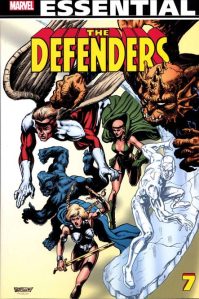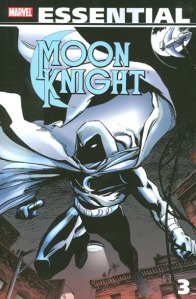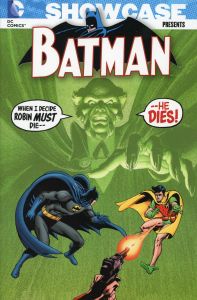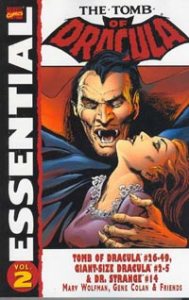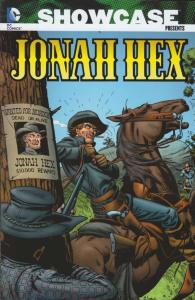Contents: Captain Marvel #22 (September 1972) to #35 (November 1974), and #37 (March 1975) to #46 (September 1976); Iron Man #55 (February 1973); and Marvel Feature #12 (November 1973)
Key Creator Credits: Gerry Conway, Marv Wolfman, Mike Friedrich, Jim Starlin, Steve Englehart, Al Milgrom, Chris Claremont, Wayne Boring, Alfredo Alcala, and others
Key First Appearances: Lou-Ann Savannah, Thanos, Drax the Destroyer, ISAAC, Chronos, Mentor, Starfox, Blood Brothers, Eon
Story Continues From: Essential Captain Marvel Vol. 1
Overview: Mar-Vell! An alien warrior of the ancient Kree race, linked by destiny for some strange, inexplicable reason with Rick Jones, a youth in whose mined rests the power to save the universe… or destroy it. This is Essential Captain Marvel Vol. 2.
Following the events of the Kree-Skrull War (see Essential Avengers Vol. 4), the Captain Marvel title returns to the newsstands after a two-year hiatus. Captain Marvel now has a sidekick of sorts, with pal to the heroes Rick Jones. Now wearing the Nega Bands, Mar-Vell and Rick exchange places with each other between Earth and the Negative Zone. The length of time that one can spend in the Negative Zone tends to vary from issue to issue. Regardless, spending time away from Earth is really putting a crimp in Rick Jones’ dating life (sorry Lou-Ann!) and his budding music career.
After a couple of issues, Jim Starlin takes over the book and the book just explodes in greatness. Captain Marvel (and Rick) head off to space, where they are fighting to stop Thanos from capturing the Cosmic Cube. But before they can get to Thanos, they must face off against the likes of the Blood Brothers, the Super Skrull, and the Controller. And let’s not forget that the Supreme Intelligence still takes great pleasure in trying to make things difficult for the Kree’s wayward son.
Eventually, Captain Marvel and Rick find a way to extract themselves from the constraints of the Nega Bands. As much as they are tired of being linked to each other, they find that they still need each other and choose to remain as travel companions across the galaxy.
What makes this Essential?: This collection is way more interesting than the first volume. Captain Mar-Vell really comes alive when Jim Starlin comes on board as the writer and penciller. Transforming the character from a stranger on a strange world into a cosmic entity that can hold his own with the most powerful beings in the universe makes him much more interesting. And giving him a main enemy to be fighting against rounds out the character and provides an even better reason to keep reading.
Footnotes: Captain Marvel #36 is a reprint of Marvel Super-Heroes #12, the first appearance of Captain Mar-Vell. That issue can be found in Essential Captain Marvel Vol. 1. The new cover and three new framing pages are included in this Essential.
Iron Man #55 is also reprinted in Essential Iron Man Vol. 4.
Marvel Feature #12 is also reprinted in Essential Marvel Two-in-One Vol. 1.
Captain Marvel #33 is also reprinted in Essential Avengers Vol. 6.
If you like this volume, try: The Thanos Quest mini-series from Jim Starlin and Ron Lim from 1990. Given the incredible success of Avengers: Infinity War, everyone is trying to get the back-story on Thanos. Once we get past the Captain Marvel run, Thanos is barely used in the 1980s, usually only in flashback. It’s not until the early 1990s, when Starlin returns to Marvel, that Thanos’ story resumes. In an effort to win the love of Death, Thanos seeks out the Elders of the Universe, who each happens to possess one of the Infinity Gems. If Thanos can acquire all six gems, he can wield the gauntlet and destroy half of the universe. This is an intriguing look into the character, and at times makes him more human. The original issues are quite pricey in the back issue market, so you may want to opt for a trade collection or as a digital read to find these two issues.



